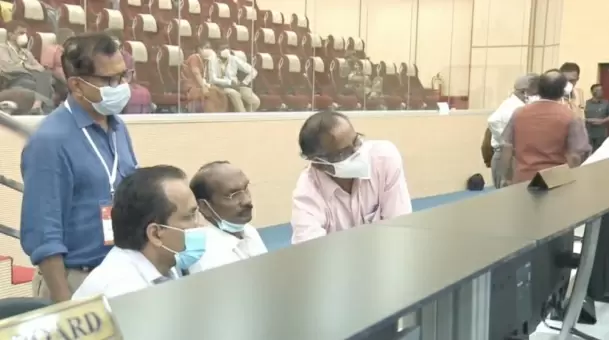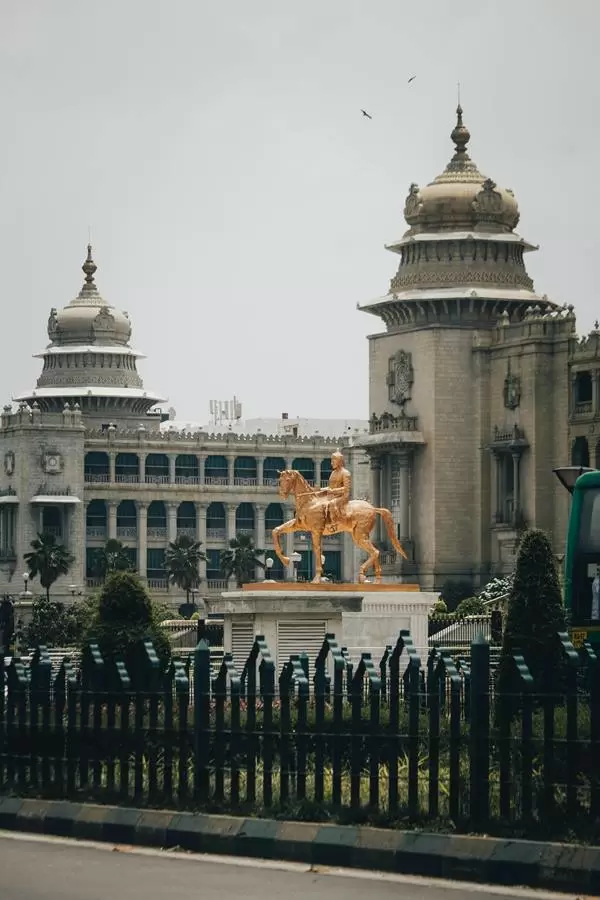Several hundred crores loss, as cryogenic engine didn't fire: ISRO
Sriharikota
12-August-2021

Photo:IANS
Indian space programme suffered a serious setback on Thursday as its GSLV-F10 rocket failed midway in its mission of putting into orbit the Geo-Imaging Satellite-1 (GISAT-1).
Along with the rocket, the 2,268 kg GISAT-1/EOS-03 communication satellite carried by the rocket -both valued over several hundred crore of rupees-was also lost.
Announcing the mission failure, K. Sivan, Chairman, ISRO said: "The mission cannot be fully accomplished because of a technical anomaly observed in the cryogenic stage."
Later ISRO in a statement said: "GSLV-F10 launch took place on August 12, 2021 at 0543 Hrs IST as scheduled. Performance of first and second stages was normal. However,ACryogenic Upper Stage ignition did not happen due to technical anomaly. The mission couldn't be accomplished as intended."
The reason(s) for non-firing of the cryogenic engine will have to be probed by ISRO, whether a faulty component was the reason.
Earlier in a GSLV rocket that went up, a component with higher dimension than what was designed was fixed and the rocket failed.
Watch This TWL Video
Ironically the failure comes on the birth anniversary of Vikram Sarabhai, the father of Indian space sector.
The 57.10 metre tall, 416 tonne Geosynchronous Satellite Launch Vehicle (GSLV-F10) lifted off from the second launch pad at 5.43 a.m.
With a strong deep growl rose into the sky breaking free from the second launch pad here at the Satish Dhawan Space Centre.
The GSLV-F10 is a three stage/engine rocket. The core of the first stage is fired with solid fuel and the four strap-on motors by liquid fuel. The second is the liquid fuel and the third is the cryogenic engine.
The rocket laden with GISAT-1 furiously rushed towards the skies with thick orange flame at its rear.
Everything went off well as planned till the cryogenic engine got into picture at about five minutes into the rocket's flight.
ISRO had also announced the commencement/ignition of the cryogenic engine.
Just over five minutes into the rocket's flight, the mission control centre at the spaceport here tensed up.
The rocket was seen on the telemetry screen veering away from its plotted path andA there was no data coming from the rocket.
One of the ISRO officials announced that there was a performance anomaly in the cryogenic engine.
Then the officials realised the mission had failed and Sivan made the announcement.
For ISRO, this is the second space mission in 2021 after the successful launch of Brazilian satellite Amazonia-1 by its rocket Polar Satellite Launch Vehicle (PSLV) earlier this year.
India presently has three fully operational rockets -- the Polar Satellite Launch Vehicle (PSLV) and two GSLV variants - GSLV-Mk II with a carrying capacity of 2.5 tonnes and GSLV-MkIII with a payload capacity of four ton.
The country uses PSLV rocket for its commercial launches - launching satellites for a fee. The PSLV rocket has a lower pay load capacity than GSLV.-IANS
More Headlines
Manglam Group Invests ₹1,000 Crore in Hospitality Expansion Across Rajasthan
Chai Kings Secures ₹24 Crore Series A Funding from AVT for Expansion
Amritsar Temple Blast: One Suspect Shot Dead, Another on the Run
Chennai Police Hunt Suspects After Brutal Kotturpuram Double Murder
Haryana BJP Leader Shot Dead Over Land Dispute On Holi: Police
Manglam Group Invests ₹1,000 Crore in Hospitality Expansion Across Rajasthan
Chai Kings Secures ₹24 Crore Series A Funding from AVT for Expansion
Amritsar Temple Blast: One Suspect Shot Dead, Another on the Run
Chennai Police Hunt Suspects After Brutal Kotturpuram Double Murder
Haryana BJP Leader Shot Dead Over Land Dispute On Holi: Police










